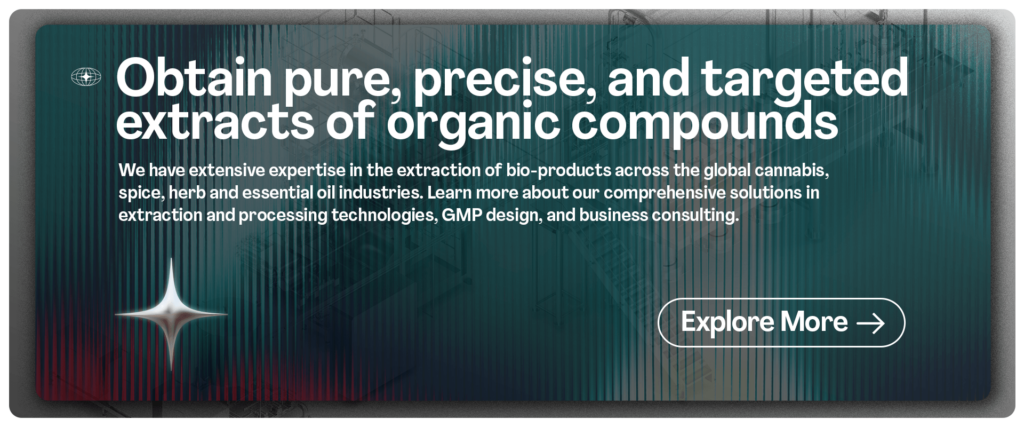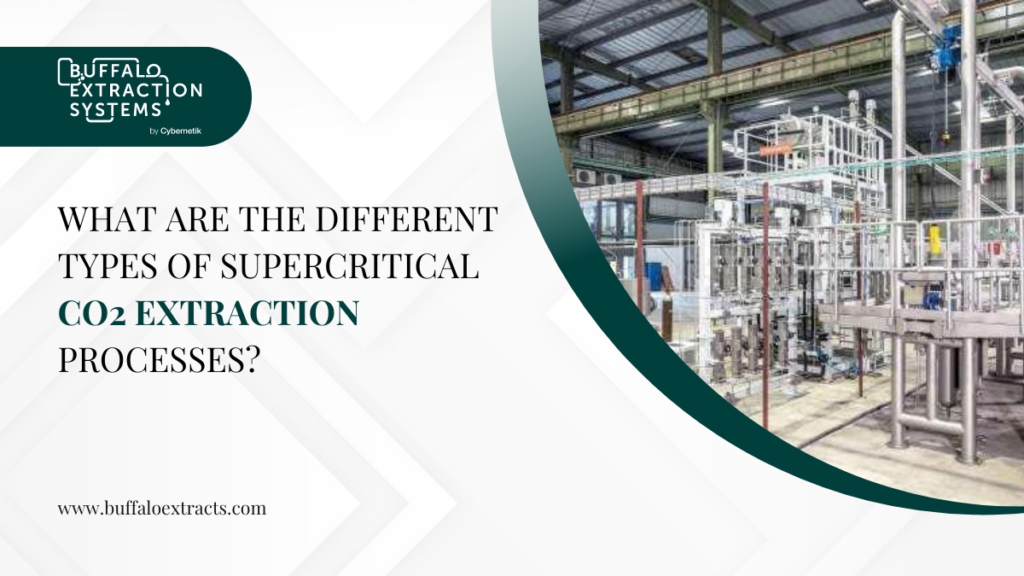Exploring the Diverse Types of Supercritical CO2 Extraction Processes
Supercritical CO2 extraction is a revolutionary method that has redefined industrial extraction by delivering high-quality compounds efficiently and sustainably. This technique utilizes the unique properties of supercritical carbon dioxide, ensuring precise extraction without leaving any residues—a departure from traditional methods.
Our exploration navigates the diverse landscape of supercritical CO2 extraction processes. From continuous flow extraction for large-scale operations to the precision of modifiers-assisted extraction, each method caters to specific industries, showcasing the adaptability of this groundbreaking technology. Unveiling the nuances of these supercritical fluid extraction processes provides a glimpse into the world of sustainable and precise compound extraction, driving innovation across pharmaceuticals, food production, and cosmetics.
Want to know more on what are the different types of supercritical CO2 extraction processes? Here it is:

- Continuous Flow Extraction: In this method, the raw material is continuously fed into an extraction chamber and supercritical CO2 is pumped through the chamber. The targeted compounds dissolve in the CO2, and the resulting mixture is then separated into its components. Continuous flow extraction is efficient for large-scale production and ensures a constant output of extracted substances.
- Batch Extraction: Unlike continuous flow, batch extraction involves processing a fixed quantity of raw material in a closed system. The supercritical CO2 is introduced into the chamber, allowing it to interact with the raw material and extract the desired compounds. Once the extraction is complete, the CO2is depressurized, and the extracted substances are collected. Batch extraction is often used for smaller-scale or research purposes.
- Dynamic Extraction: Combines elements of both continuous flow and batch extraction. It involves periodically replenishing the raw material in the extraction chamber while maintaining a continuous flow of supercritical CO2. This approach allows for longer extraction times, enhancing the efficiency of the compound extraction. Dynamic extraction is suitable for processes where a constant flow is required, but the raw material needs periodic replenishment.
- Modifiers-Assisted Extraction: Modifiers, such as ethanol or water, can be added to the supercritical CO2 to enhance the extraction process. These modifiers alter the solubility of specific compounds, making them more accessible for extraction. Modifiers-assisted extraction is particularly useful when targeting compounds that are challenging to extract with supercritical CO2 alone. The addition of modifiers can improve the selectivity and efficiency of the extraction process.
- Counter-Current Extraction: Involves introducing supercritical CO2 at one end of the extraction chamber while the extracted material is fed in at the opposite end. This creates a counter-current flow, maximizing the contact between the CO2 and the raw material. This method enhances extraction efficiency by ensuring that the CO2 encounters fresh material continuously, leading to higher yields.
- Fractionation: The process involves manipulating pressure and temperature to selectively extract different compounds from a mixture. By adjusting these parameters, specific components can be targeted at different stages of the extraction process. Fractionation is valuable when a mixture contains multiple compounds with varying solubilities, allowing for the separation of different components based on their unique characteristics.
- Supercritical Fluid Chromatography (SFC): Is a technique that combines supercritical CO2 with a co-solvent, often an organic modifier such as ethanol. This method is similar to traditional liquid chromatography but uses supercritical CO2 as the mobile phase instead of liquid solvents. SFC offers high separation efficiency and is particularly useful for compounds that are challenging to separate using conventional liquid chromatography.
- High-Pressure Extraction: Involves operating the supercritical CO2 extraction system at elevated pressures, typically above 10,000 psi. The increased pressure enhances the solubility of certain compounds and allows for the extraction of substances that may be difficult to capture at lower pressures. High-pressure extraction is employed when targeting specific compounds that require elevated pressure conditions for efficient extraction.
- Isobaric Extraction: A specialized technique within supercritical CO2 extraction, it maintains a constant pressure throughout the medical cannabis extraction process. Unlike traditional methods where pressure may vary, isobaric extraction ensures a consistent pressure environment. This approach is particularly useful when dealing with temperature-sensitive compounds, as it allows for precise control over extraction conditions. The stability in pressure minimizes the risk of thermally-induced degradation of sensitive compounds, making isobaric extraction an ideal choice for preserving the integrity of certain bioactive substances in pharmaceutical and natural product extraction processes.
- Expanded Bed Extraction: Is an innovative method that involves expanding the volume of the supercritical CO2 in the extraction chamber. By expanding the bed volume, the contact surface area between CO2 and the raw material increases, enhancing mass transfer and extraction efficiency. This technique is advantageous for extracting compounds from materials with complex matrices, promoting better penetration and extraction of target components. Expanded bed extraction is particularly applicable in situations where raw materials have varying densities and particle sizes, showcasing its utility in obtaining high-quality extracts from diverse sources, such as botanicals and biomass.
Conclusion
Now that we know what are the different types of supercritical CO2 extraction processes, the versatility and precision of this groundbreaking technology become increasingly apparent. From continuous flow extraction facilitating large-scale production to dynamic and modifiers-assisted approaches enhancing efficiency, each method serves a unique purpose across various industries. The ability to selectively extract compounds without environmental compromise positions supercritical CO2 extraction as a beacon for sustainable practices.
As industries increasingly prioritize eco-friendly solutions, supercritical CO2 extraction stands at the forefront, offering a green alternative without sacrificing efficiency. This method not only meets the demands of today’s production needs but also paves the way for more sophisticated extraction requirements. With its minimal environmental impact and unparalleled selectivity, supercritical CO2 extraction, CO2 extraction for essential oils is revolutionizing how we obtain high-quality compounds across the pharmaceutical, food, and cosmetic industries, and beyond.

